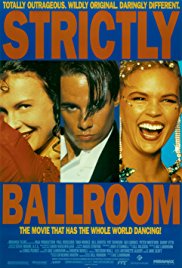FAMILIES IN CRISIS
1. What happened to this family as a result of the secret that no one talked about? What does this tell us about secrets in families?
Suggested Response:
Secrets in families fester and cause problems.
BREAKING OUT AND TALENT
2. Flamenco is very different from ballroom dancing. If Scott has closed his mind to the beauty of flamenco, what would he have lost?
Suggested Response:
Not only would he have lost the beauty of that dance form but he would have lost his own ability to grow. Flamenco was more to Scott than just another form of dance it was what he brought to his ballroom dancing and demonstrated the fact that he could go beyond what his parents had given him and contribute something on his own. It was his way of growing up.
3. Should Scott have “put his trust in the Federation” as Les suggested?
Suggested Response:
No. That was a sure road to stagnation and despair.
4. If Scott had abandoned his new steps and conformed to the pressure from the Federation, what would have eventually happened to his interest in dance?
Suggested Response:
It would not have consumed him and it probably would have withered and died, as did his father’s interest in dancing. Maybe he could have danced the new steps on the rooftop with his father?
5. Did Scott’s character and his interest in dance most resemble his mother’s or his father’s?
Suggested Response:
Scott was innovative, like his father.
Discussion Questions Relating to Ethical Issues will facilitate the use of this film to teach ethical principles and critical viewing. Additional questions are set out below.
RESPECT
(Treat others with respect; follow the Golden Rule; Be tolerant of differences; Use good manners, not bad language; Be considerate of the feelings of others; Don’t threaten, hit or hurt anyone; Deal peacefully with anger, insults and disagreements)
1. In this film, most of the characters thought that Fran, because of her inexperience, was not capable of being a partner for Scott. They were wrong. What does this tell you about how you should behave towards others?
Suggested Response:
Never underestimate their capacity and give them a chance to display their talent.


